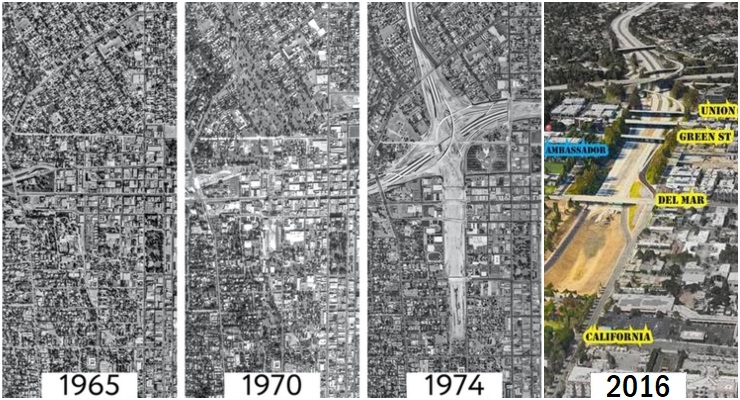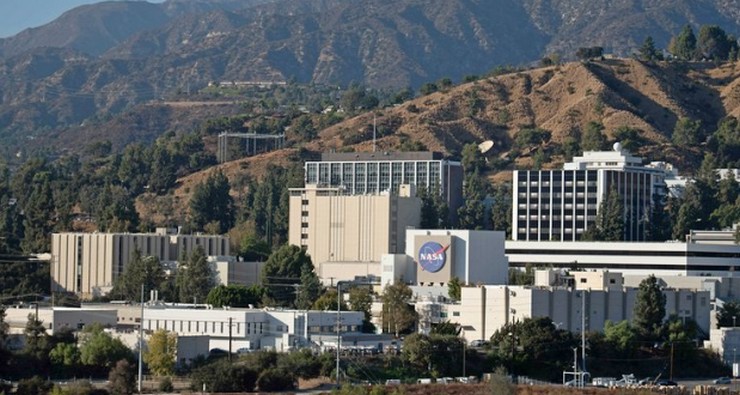 Supporters of putting overhead utility lines below city streets, or “undergrounding,” say that it has helped to beautify Pasadena, improve electric service reliability, enhance public safety and protect the city’s urban forest. But the massive program would end up costing $2 billion, would require a century to complete and was involved in a financial scandal.
Supporters of putting overhead utility lines below city streets, or “undergrounding,” say that it has helped to beautify Pasadena, improve electric service reliability, enhance public safety and protect the city’s urban forest. But the massive program would end up costing $2 billion, would require a century to complete and was involved in a financial scandal.
Should the massive project be completed? A series of community meetings will ask that question.
The Pasadena Water and Power is collecting community input to determine whether to complete the Underground Program or discontinue the underground surtax on customers’ electric bills.
These discussions are being hosted within all seven districts of the city and lead by Councilmembers. A number will be conducted throughout the month of November.
 “The need to go out and hear from the community is important,” said District 7 Councilmember Andy Wilson who lead a community meeting on October 26.
“The need to go out and hear from the community is important,” said District 7 Councilmember Andy Wilson who lead a community meeting on October 26.
The utility undergrounding program was established in 1968 with a goal to remove overhead utility lines such as the electric, phone and cable lines and place them under city streets to enhance the liability of our electric system and to improve public safety.
This effort does is not cheap or quick to finish.
“I think people are quite shocked by the expense and how costly it has become in terms of per mile, said Wilson.
Based on the current funding structure, the cost of Undergrounding is about $90,000 per property affected — or about $10-12 million per mile — for a total cost of about $2 billion to complete all feasible city streets. Ongoing operation and maintenance costs for underground utility systems are paid for by electric rate funds. Compared to that of overhead systems, these costs tend to be higher, according to the city website.
The program is funded by a tax collected on electric bills called the “Underground Surtax” that generates approximately $5 million per year. It funds roughly .5 to .7 miles of underground construction per year.
The Underground Surtax is about $44 per year for a typical 500 kwh-per-month residential customer.
“One of the other facts that comes out is that its not clear that it is less costly or necessarily that much safer than a traditional power pole. These statistics we’ve seen just don’t suggest that,” said Wilson.
According to PWP, an added benefit from under grounding has helped in area of beautification.
“Aesthetics are important but more people are persuaded by the safety perspective,” said District 5 Councilmember Victor Gordo who also lead a community meeting on October 27.
The city council established two categories of streets to be underground in 2003: Category I and Category II with a goal of completing Category I streets first that are described as heavily used arterial and collector streets, concentrated near civic areas, landmarks and public recreation.
Category II includes residential streets an alleys .
Not all streets in Pasadena will have their utility lines placed underground. There are currently about 70 miles of overhead power lines that do not fit within the criteria of Category I or II. Most of these areas are homes that have utility poles in the rear of the property.
“The general feeling in my district was that other parts of the city have benefitted more, but people were puzzled why it takes so long,” said Gordo.
The Underground Program was established with safety and reliability in mind. Placing utility lines underground protects delicate equipment and helps reduce the chances of power outages due to windstorms, vehicle accidents, and other hazards. Undergrounding also comes with some challenges, according to the city website.
Underground utility systems tend to have fewer unplanned outages, but when outages do occur, they take longer to locate and repair. Underground circuits are also more expensive to build and maintain.
“Residents have shown concern about the fact that outage times are quite a bit higher than overhead wire outages,” said Wilson.
Pasadena Mayor Terry Tornek came out against the undergrounding program, saying the aesthetic benefits are outweighed by the cost and new problems in restoring power after system problems when the wires are hard to reach, according to a recent article in the SGV Tribune.
Pasadena identified a total of 94 miles of Category I streets for conversion in the Underground Districts Program, of which 46 miles have been converted to underground utilities thus far.It would take approximately 100 years to complete remaining Category 1 streets at an estimated cost of $600 to 700 million with the current funding supply.
“People are certainly taken back when they hear about the 2 billion but they do understand that it is an expensive public works project. I believe most people want to see this project move on. There are both safety issues as well as aesthetic issues,” said Gordo.
Telecommunication and cable companies are not required to underground for category II streets, so the cost to underground those lines are absorbed by the underground program.
Pasadena has 150 miles of Category II streets, approximately 79 miles of which are suitable for undergrounding. The rest of the streets have been determined as not ideal for construction, for several reasons, according to the city website.
“People are eager, in most cases, to have the undergrounding come to their neighborhoods. Who wouldn’t want to have these power cables underground?,” said Wilson.
The process of installing undergrounding overhead power lines includes installing underground vaults, placing switches and transformers and installing underground conduits and cables. The entire process takes five to ten years to underground one district.
There are currently about 70 miles of overhead power lines that do not fit within the criteria of Category I or II. Most of these areas are homes that have utility poles in the rear of the property.
Another topic of concern from residents, according to Wilson, is the question of how long the technology will be relevant as newer energy technology is developed.
“It has a lot of us thinking, what technology platform should we really be investing in?,” said Wilson who mentioned the possibility of solar technology as a future standard.
Both Wilson and Gordo mentioned that the general consensus from residents in their districts want to see the program accelerate in a timeline that would yield results to their property in a reasonable timeline that is not several centuries.
“The city has made progress with under grounding, but we can and should do better,” said Gordo.
“The city has made a lot of progress. It’s just really come down to the matters of price and the timeline more than anything,” said Wilson.
District Meetings: Underground Program
For questions about Pasadena’s Underground Program, please visit the Undergrounding FAQ page or call PWP’s Utility Service Planning Group at (626) 744-4495.














 0 comments
0 comments






